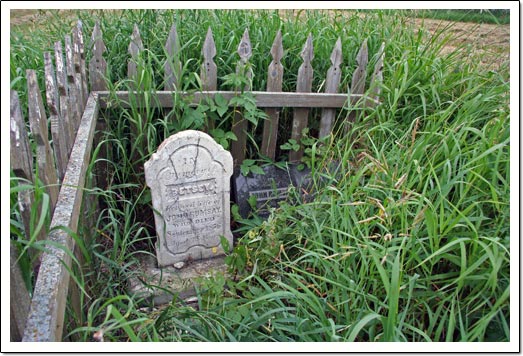Manitoba Municipal Heritage Site No. 28
Betsey Ramsay's Grave
SE 11-23-4E,
Riverton area

Designation Authority: Bifrost (R.M.)
Present Owner: Bifrost-Riverton (M)
Betsey Ramsay's Grave is important for the rural community around Riverton, a potent and poignant reminder of the area’s early interaction between Aboriginal peoples and Icelandic settlers, of a smallpox epidemic that decimated the Interlake region in 1876, of a love story that still inspires local attention, and of traditional Icelandic folklore beliefs. The gravesite is the only tangible link to Betsey and John Ramsay, prominent members of a local Saulteaux Aboriginal band who reached out in the mid-1870s to newly-arrived Icelandic immigrants, educating the settlers in winter survival techniques and providing meat to hungry families.
The gravesite for Betsey Ramsay also is the only known marked resting place in the area that recalls the 1876 smallpox epidemic, a devastating episode that took the lives of both First Nations peoples and Icelanders. That Betsey’s burial is marked with a fine marble tablet recalls the heroic efforts of John Ramsay who undertook a pilgrimage of more than 200 kilometres to obtain the memorial from Lower Fort Garry, making it the first marker of its kind in the area. The situation of the grave on the shores of Lake Winnipeg reinforces the depth of loss aroused in John Ramsay by the death of his wife, who was said to have loved the sounds associated with the lake. The site has also assumed importance as a reminder of traditional Icelandic folklore, and of that culture's belief in the power of dreams.
Local legend asserts that the short white picket fence that traditionally encloses the gravesite was the manifestation of a dream in which Trusti Vigfusson, who in 1910 hunted on the land on which the gravesite sits, was directed by John Ramsay's ghost to erect a protective fence.


